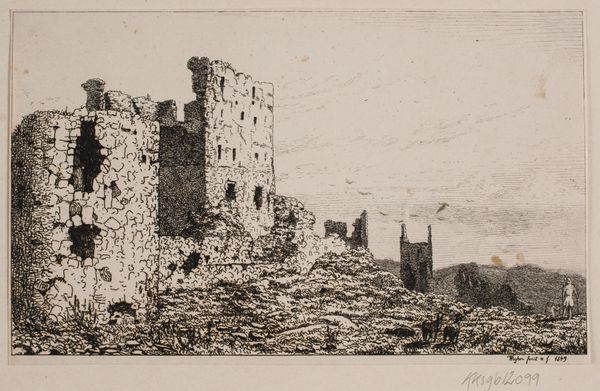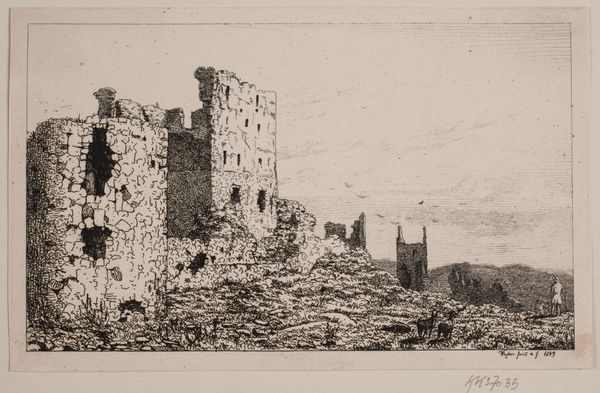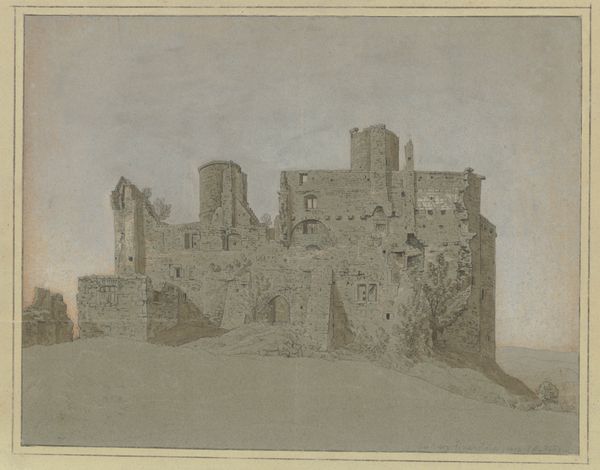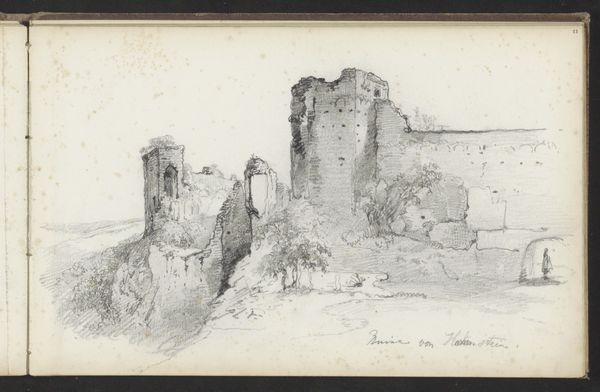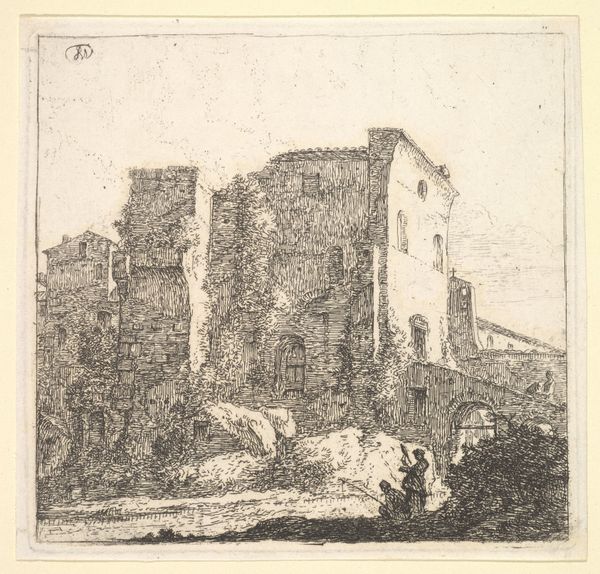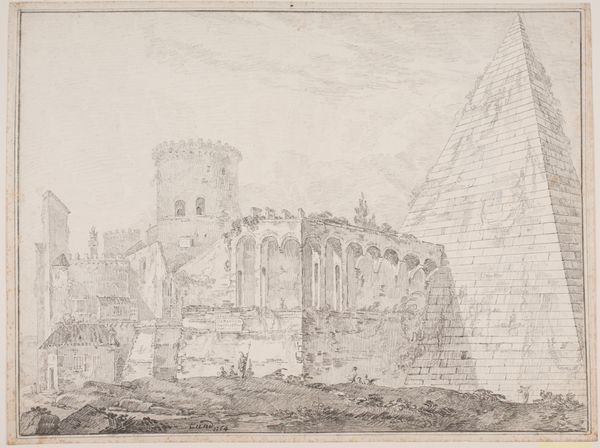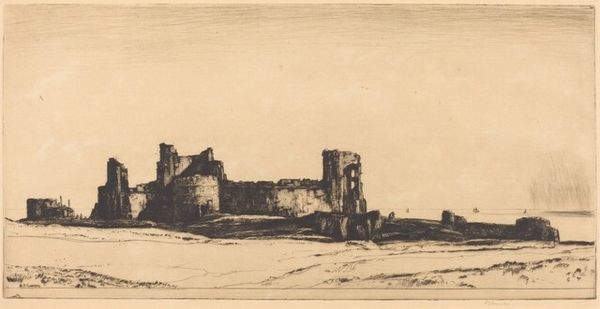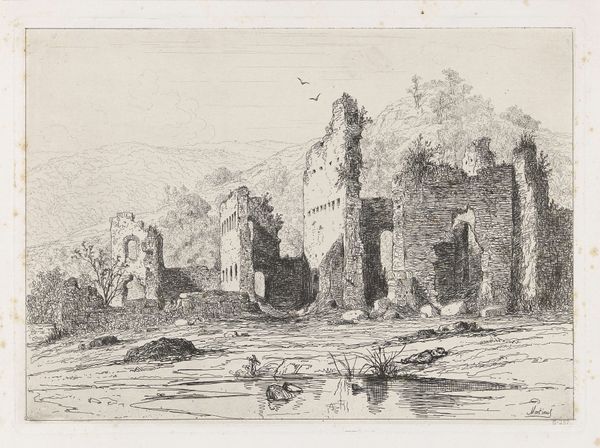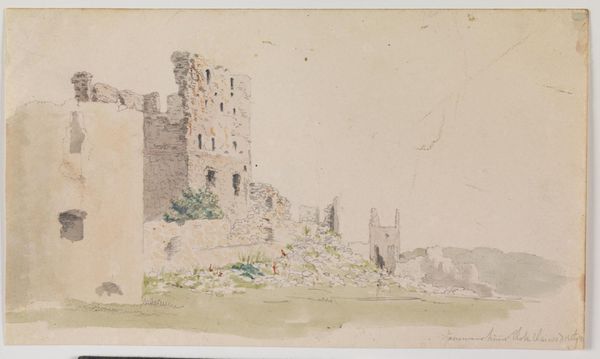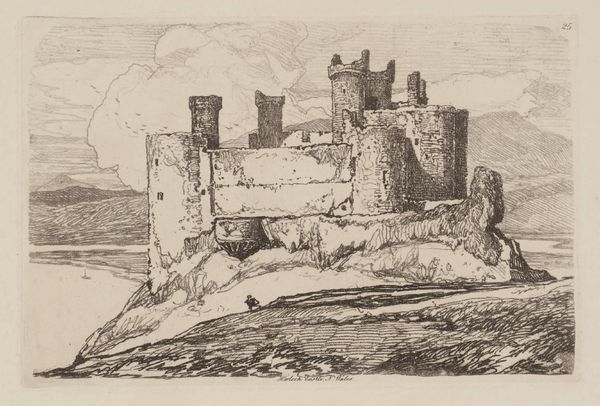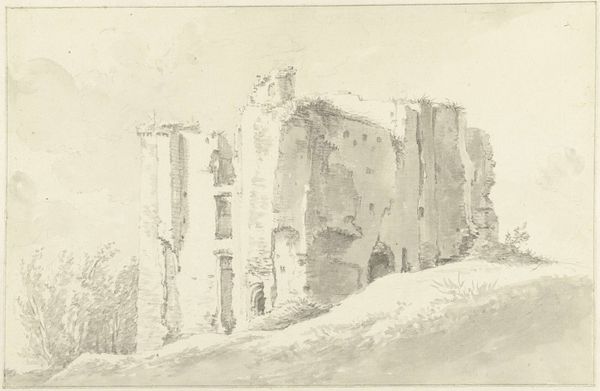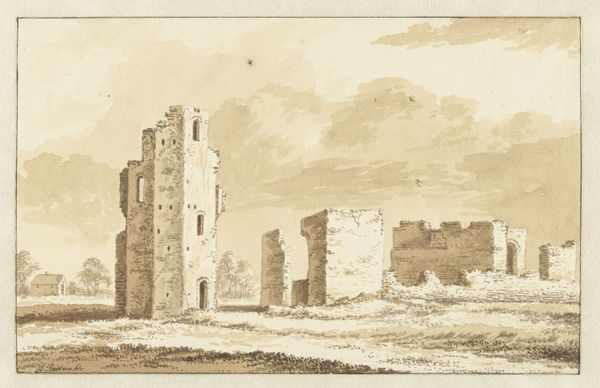
print, etching
# print
#
etching
#
landscape
#
etching
#
romanticism
Dimensions: 122 mm (height) x 187 mm (width) (bladmaal)
Curator: Here we have "Hammershus på Bornholm" by Vilhelm Kyhn, an etching made in 1849 and part of the collection at the Statens Museum for Kunst. It’s a stark rendering, wouldn't you say? Editor: Immediately. The high contrast evokes such desolation, and you immediately lock onto the crumbling edifice of what must have been an impressive structure. What sort of stone was used for this ruin, I wonder, and how accessible would the site have been to Kyhn at that time? Curator: Stone holds memory, wouldn’t you agree? I can’t help but see this not just as a depiction of ruins, but as a symbol of decay and lost power, so charged with Romantic sensibilities. There's something so viscerally sad about watching a mighty castle return to dust and echo, it stirs deep cultural feelings... Editor: Decay, yes, but also material transformation. I’m also interested in Kyhn’s access to the site and production considerations. This piece involved significant time to transport the artist's tools, and then the etching process itself would require laborious detail at different states to allow him to arrive at the levels of visual information available in the print. Curator: But look how the etching’s lines create an atmosphere of decline, each stroke heavy with implications about temporality, mortality... Kyhn captures an enduring power and visual testament to human resilience against overwhelming loss, which itself is rooted in mythologies we replay as if it to feel in charge of inevitability. Editor: Yes, but beyond these symbolist readings I wonder, what did the production and distribution of prints like this do for perceptions and ultimately access to this far-flung locale? To what audiences and for what cost was the materiality of the image delivered in 1849? The image can itself become a commodity and it may very well have shaped and changed Bornholm materially! Curator: That's an interesting thought; nonetheless, let me note this etching carries an almost mythic significance to the people of Bornholm, acting as a collective memento mori… and perhaps a rallying symbol against oppression. Editor: I am compelled, however, by how the industrial processes of etching allow for disseminating these visual experiences far and wide. Both our interpretations only further underscore how it makes tangible that otherwise would simply crumble and disappear from communal perception, to allow others to share that emotion, which you can't exactly build out of symbolism. Curator: Absolutely. Editor: Indeed.
Comments
No comments
Be the first to comment and join the conversation on the ultimate creative platform.
